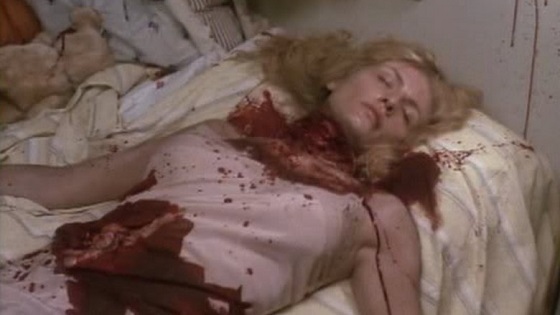Not only is Jack the Ripper one of the most famous and infamous killers of all time, he’s also a pretty good movie villain. Whether the movie sticks relatively close to the true story, like Jack the Ripper, or takes things in a surreal mashup direction, such as in Edge of Sanity, Jack is always a fun antagonist. A movie can even transport the slicey Brit into the future and still be effective. Case in point: the eighties crime thriller Jack’s Back.

Set in 1988, Jack’s Back sees a serial killer celebrating the 100th anniversary of Jack the Ripper’s crimes by performing copycat murders throughout Los Angeles. After one particularly gruesome slaying, a medical intern named John Wesford (James Spader from The New Kids and “The Blacklist”) is named as a suspect, and the suspicions seemed to be confirmed when he ends up dead himself of an apparent suicide. But his twin brother, Rick (also played by Spader), has a hunch that John was murdered. Rick sets out to find the culprit, and his search leads him right to the same butcher who has been Jack the Rippering his way through the City of Angels.

To be fair, Jack’s Back doesn’t really have Jack the Ripper in it; the title is taken from a sensationalized newspaper headline about the copycat crimes in the movie. Written and directed by Rowdy Herrington (Road House), the movie generally gets lumped into the slasher genre, but that’s not really accurate. Heck, Jack’s Back isn’t even very gory; besides John’s “suicide,” there’s only one true killing, and it’s mostly just the aftermath of the murder that’s shown. Once Jack’s Back gets rolling, it’s a brilliant crime drama that showcases Spader’s charismatic presence and Herrington’s snappy writing. And, it’s a whodunit that actually surprises with who done it.

Jack’s Back was produced in 1988, the same year in which it is set, and it definitely looks every bit of it; the best way to describe the movie is “totally eighties!” The film functions as a pretty awesome time capsule of the era, with every little detail – hairstyles, makeup, clothing – just screaming “Relax…Don’t Do It!” and “I’m So Excited!” And it’s not just the fashions that are dated, either. The police officers are straight out of an episode of “Miami Vice,” being more concerned with kicking down doors with their guns drawn and shooting before asking questions than they are with solving any actual crimes. The nostalgia factor doesn’t distract from the overall effectiveness of Jack’s Back, but it is kind of funny to watch for those who remember the eighties…or even for those who don’t.

The musical soundtrack to Jack’s Back syncs right up with the eighties theme of the movie. Composed by Danny Di Paola (The Unspeakable) with a programming assist from studio synthesist Rob Schwimmer (Alien Trespass), most of the incidental music is classic new-wave synth pop and driving techno-rock. The main title theme was written by semi-famous music ghostwriter Craig Braginsky, but the real star of the musical soundtrack is a Paul Saax song called “Red Harvest” (written because the production couldn’t afford to license Peter Gabriel’s “Red Rain”), which sounds like it was pulled right out of the soundtrack of The Lost Boys. Like any good eighties horror movie, Jack’s Back is full of hip and cool music.

There’s some interesting photographic things going on in Jack’s Back. The movie was shot on location in Los Angeles by cinematographer Shelly Johnson (Captain America: The First Avenger), and the city plays itself very well. There are two extremes to the film’s look; the nighttime scenes are electric, with neon and halogen illuminating the action, while the daytime and internal scenes are completely whitewashed and smoky looking, to the point where they are flat and lacking of any style. The vibe-less daytime scenes don’t exactly kill the movie, but they do make the audience appreciate the danger and the energy of the nocturnal segments a little more.

The concept of bringing Jack the Ripper into the current day was explored a few years earlier by the David Hasselhoff/Stepfanie Kramer television movie Terror at London Bridge, but Jack’s Back captures the paranoia and mystery in a much more thoughtful way without taking itself too seriously. Plus, it has double the James Spader, a great soundtrack, and a title that rhymes. Jack’s Back wins.